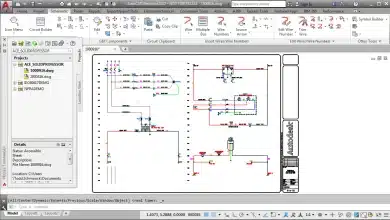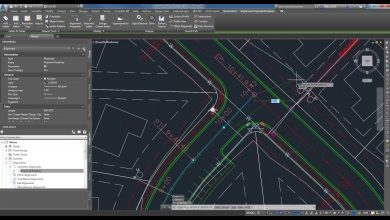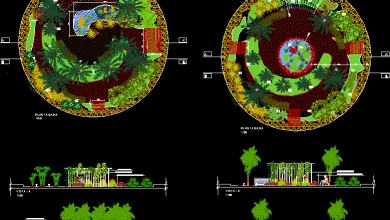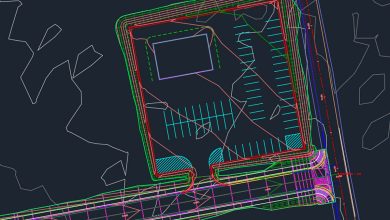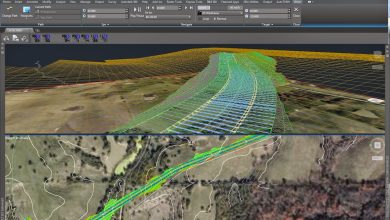Civil 3D by Autodesk stands out as a leading tool that empowers professionals to design, draft, and manage infrastructure projects with unprecedented efficiency and precision. This comprehensive guide aims to provide in-depth insights into the best methods and practices to learn and master Civil 3D, whether you’re a complete beginner or a seasoned professional seeking to sharpen your skills.
Civil 3D, packed with a wide array of sophisticated features, can indeed seem overwhelming at first glance. But with a structured learning approach, appropriate resources, and dedicated practice, navigating its functionalities becomes considerably more manageable. In this article, we’ll delve into a systematic plan to learn Civil 3D, tips for effective learning, and additional resources to augment your understanding and proficiency in the software.
Key Takeaways
- Learning Civil 3D effectively requires a structured approach involving understanding the basics, selecting learning resources, hands-on practice, participating in community discussions, and continuous learning.
- While the time required to master Civil 3D depends on the individual’s prior knowledge and learning pace, a dedicated practice can lead to proficiency in several months.
- There is an abundance of resources available for learning Civil 3D, including textbooks, online courses, video tutorials, and official Autodesk training guides.
- Joining a Civil 3D community provides a platform to share experiences, learn new tips, and seek solutions for queries or issues.
- Civil 3D is an evolving tool; therefore, continuous learning and updating your knowledge are crucial.
What’s the Best Way to Learn How to Use Civil 3D?
Learning Civil 3D requires a combination of theoretical understanding, hands-on practice, and continuous learning. Here’s a systematic approach to mastering this powerful tool:
- Start with the Basics: Understand what Civil 3D is, its applications, and its user interface. Know about its primary tools and how they function.
- Learning Resources: Invest in good learning materials. They could be textbooks, online courses, video tutorials, or official Autodesk training guides.
- Hands-On Practice: Nothing beats learning by doing. Practice the concepts you learn on real projects.
- Join a Community: Interact with other Civil 3D users, join forums and discussion groups.
- Continuous Learning: Keep updating your knowledge. Civil 3D is continuously evolving with new updates and features.
Let’s explore these steps in detail:
Understanding the Basics of Civil 3D
Before diving into the complexities of Civil 3D, it’s vital to understand the basics. This includes:
- Familiarization with the interface: Take time to understand the interface, including the ribbon, tool palettes, command line, and properties palette.
- Understanding the basic concepts: Know about points, surfaces, alignments, profiles, corridors, parcels, grading, and pipes, which are the foundation of Civil 3D.
- Learning the basic tools: Learn about the primary tools such as point creation tools, surface creation tools, alignment creation tools, and more.
Selecting Learning Resources
There’s a multitude of resources available to learn Civil 3D. The selection depends on your learning style, budget, and time availability. Here are some suggestions:
- Textbooks: Books such as Mastering AutoCAD Civil 3D are comprehensive resources.
- Online Courses: Websites like LinkedIn Learning and Udemy offer various Civil 3D courses suitable for different levels.
- Video Tutorials: Autodesk’s official YouTube channel and other platforms provide a wealth of free video tutorials.
- Official Autodesk Training Guides: Autodesk offers official training guides for Civil 3D, which are an excellent resource for beginners and intermediate users.
Practicing Hands-On
No matter how many tutorials you watch or books you read, there’s no substitute for hands-on practice. Tips for effective practice include:
- Recreating Examples: Try to recreate the examples demonstrated in your learning resources. This not only helps reinforce your learning but also familiarizes you with the tools and commands.
- Working on Real Projects: Apply what you have learned to real projects, whether they’re your professional work or hypothetical scenarios.
- Experimenting with Tools: Don’t be afraid to experiment with different tools and commands in Civil 3D. The more you experiment, the more comfortable you’ll become with the software.
Joining a Civil 3D Community
Joining a community of other Civil 3D users can significantly enhance your learning process. You can ask questions, share experiences, and learn new tricks and tips. Some recommended platforms are:
Continuous Learning
The world of Civil 3D is continually evolving, with Autodesk regularly updating the software with new features and improvements. Keep yourself updated with the latest changes and additions.
Remember, mastering Civil 3D is not a one-time effort. It requires dedication, persistence, and continuous learning. However, with the right approach and resources, you can become proficient in Civil 3D, opening up numerous opportunities in the civil engineering and architecture fields.
FAQ: The best way to learn how to use Civil 3D
1. How Long Does It Take to Learn Civil 3D?
Learning Civil 3D is not a fixed-duration process; it largely depends on your previous experience with CAD software, your ability to grasp new concepts, and the amount of time you can dedicate to learning. If you’re a beginner, you can expect to get comfortable with the basics in a few weeks of intensive study.
However, mastering Civil 3D takes significantly longer. You should expect to spend several months to a year to become proficient, depending on your regular practice and utilization of the software. It’s a complex tool with numerous features, so continuous learning and practice are key to mastering it.
Remember that learning Civil 3D is not a race but a journey. It’s more important to understand and apply the concepts correctly than to rush through them.
2. Do I Need Any Prior Knowledge to Start Learning Civil 3D?
While it’s not strictly necessary, having a basic understanding of AutoCAD and general drafting principles can be beneficial when starting with Civil 3D. This software is based on the AutoCAD platform, so knowledge of basic AutoCAD operations will make the learning process smoother.
Furthermore, familiarity with civil engineering concepts and terminologies can also be beneficial. Civil 3D is a specialized software designed specifically for civil engineering applications. Therefore, understanding these principles will allow you to utilize the software more effectively.
However, don’t be discouraged if you’re a complete beginner. With dedication and the right resources, you can start learning Civil 3D from scratch.
3. Is Civil 3D Difficult to Learn?
Civil 3D can be challenging to learn, particularly for beginners, due to its wide array of features and complex functionalities. It’s a specialized tool that requires both technical software skills and understanding of civil engineering principles.
However, with the right approach, even this complexity can be managed. Break down the learning process into manageable parts, starting with the basics and gradually moving towards more complex topics. Use a variety of resources and remember to practice regularly.
Remember that everyone learns at their own pace, and it’s okay to find some aspects of Civil 3D challenging. Keep practicing, ask for help when needed, and you’ll eventually get the hang of it.
4. Can I Use Civil 3D for Architectural Design?
Civil 3D is primarily designed for civil engineering tasks such as road design, site design, and land development planning. While you can use it for basic architectural design tasks, it lacks the specialized tools and features found in architectural design software like AutoCAD Architecture or Revit.
However, knowledge of Civil 3D can still be beneficial in the field of architecture. It allows you to understand and participate in the broader project context, especially for projects involving significant site design or land development components.
If you’re primarily interested in architectural design, consider learning software specifically designed for this purpose. However, if you’re working in a multidisciplinary field, learning Civil 3D can broaden your skillset.
5. How Can I Validate My Civil 3D Skills?
Validating your Civil 3D skills can be done by obtaining certification from Autodesk. The Autodesk Certified Professional: Civil 3D for Infrastructure Design is a globally recognized certification that validates your skills and knowledge in Civil 3D.
This certification not only proves your proficiency in Civil 3D but also boosts your professional credibility. It can help you stand out in job applications and can often lead to better job opportunities and higher salaries.
To obtain this certification, you need to pass an examination that tests your knowledge and skills in Civil 3D. Therefore, before attempting this certification, make sure you have a solid understanding of Civil 3D and plenty of hands-on practice.
6. What Are the System Requirements for Civil 3D?
Running Civil 3D smoothly requires a robust computer system. Autodesk recommends a system with at least an Intel Pentium 4 or AMD Athlon 64 processor, 8 GB of RAM, and 10 GB of disk space. For the operating system, Civil 3D supports Windows 10, Windows 8.1, and Windows 7.
However, these are the minimum requirements, and depending on the complexity of your projects, you may need a more powerful system. For larger projects, consider a system with a faster processor, more RAM, and a dedicated graphics card.
Also, remember to keep your system updated with the latest drivers and updates. This ensures maximum compatibility and performance with Civil 3D.
7. Are There Any Alternatives to Civil 3D?
Yes, there are several alternatives to Civil 3D, each with its own strengths and weaknesses. Some popular alternatives include MicroStation by Bentley Systems, Vectorworks Landmark, and BricsCAD.
MicroStation is particularly popular among large enterprises, known for its robustness and advanced features. Vectorworks Landmark is appreciated for its ease of use and excellent visual capabilities, while BricsCAD is a cost-effective solution with a familiar AutoCAD-like interface.
Choosing an alternative depends on your specific needs, budget, and personal preferences. Before making a decision, consider trialing different software to see which one suits your workflow the best. Remember, each software has a learning curve, so invest time in learning and mastering your chosen tool.
Conclusion
Embracing the dynamic nature of learning Civil 3D, with its complex functionalities and updates, can open the doors to a plethora of opportunities in civil engineering and architectural design. While the learning process may seem daunting initially, a clear understanding of the basics, coupled with the right resources, ample practice, and an active participation in relevant communities, can significantly smoothen the journey.
The vast landscape of Civil 3D may pose challenges along the way, but remember, mastering it is not a race but a marathon. So, don’t shy away from asking questions, sharing your experiences, and constantly upgrading your skills. Armed with perseverance and the right attitude, you’re well on your way to becoming proficient in Civil 3D, ready to create, innovate and reshape the world of design.

